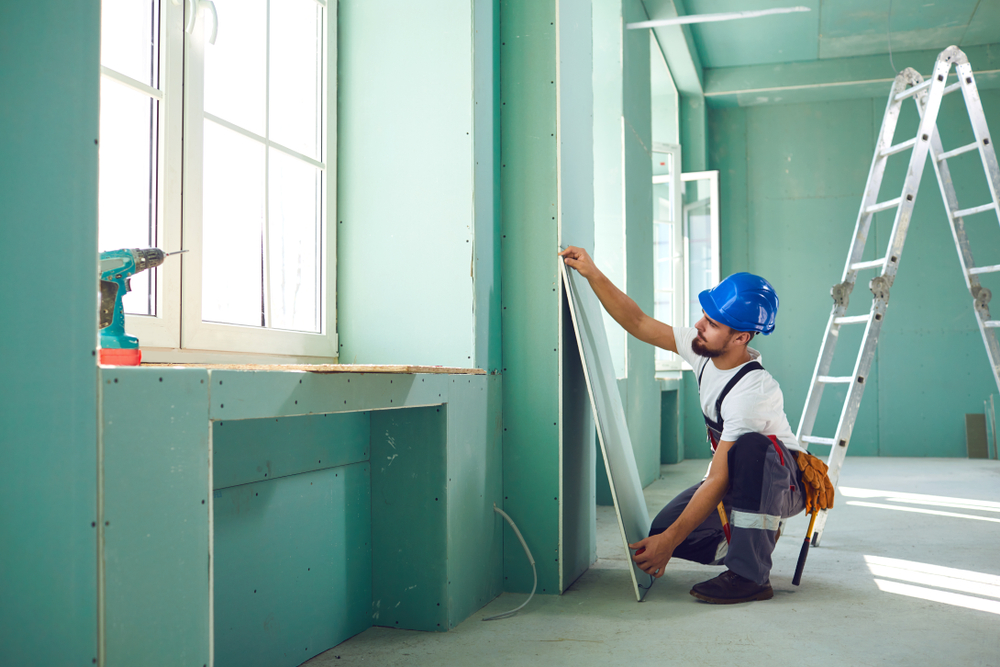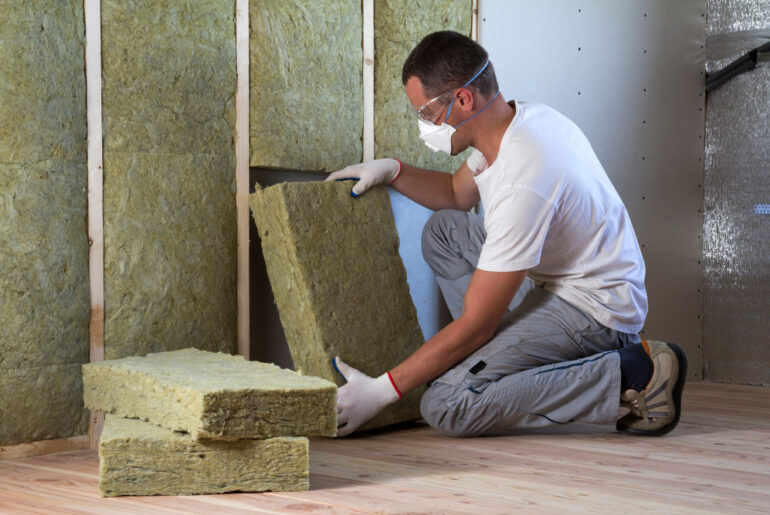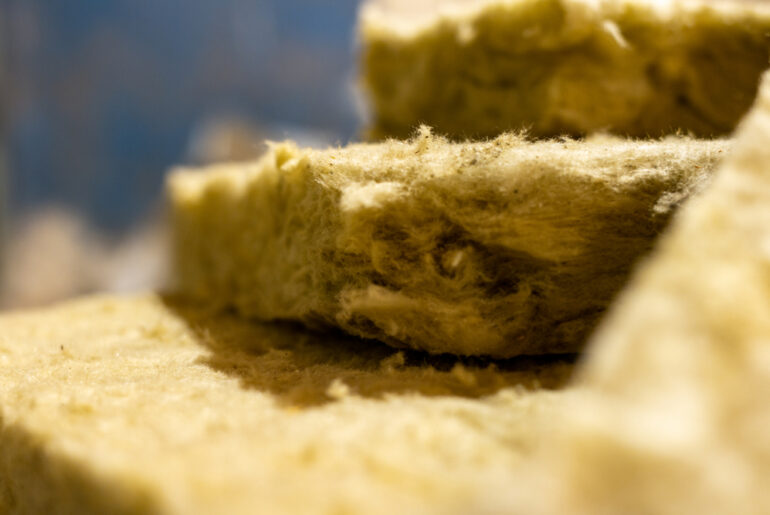Many of us enjoy carrying out home improvement works on our own homes. Aside from the savings we can make there is also the general satisfaction such an activity brings.
There’s certainly a knack to installing dense pack cellulose insulation, getting the fill material in where it needs to go, and to the right level, but it is something that is definitely not outside the expertise of seasoned DIY enthusiasts.
What are the tricks you need to know to make your installation a success? We have scoured the industry for the best methods to make their experience count for you.
Installing Dense Pack Cellulose
Before You Start
Working it Out
The first thing you will need to know is the square footage of the walls you intend to insulate, then the depth of the wall studs. The figure you come up with should give you a pretty good idea of how much product you are going to need.
Most cellulose will come in a 25Lb bag from $13 to $18, and a bag should fill a 5” cavity up to 17 square feet at a density level of 3.5lbs per cubic foot. The chart below gives you the average coverage per square foot for specific wall cavity depths and the R-value achieved at a typical density of 3.5Lbs per cubic foot.
| Wall Stud Cavity Depth | Typical R-Value | Coverage / Bag / sq ft |
| 3.5” | 13 | 24.5 |
| 4” | 15.2 | 21.4 |
| 4.5” | 17.1 | 18.9 |
| 5” | 19 | 16.8 |
| 5.5” | 20.9 | 15.1 |
| 6” | 22.8 | 13.7 |
| 6.5” | 24.7 | 12.6 |
Clearly the deeper the wall cavity the better for the overall R-value of a home’s thermal envelope, so this should play a part in the decision of whether or not cellulose is the right insulation for you. However, it could be teamed with a foam board applied to the sheathing when you come to renew the siding.
Adding it Up
As a rule of thumb, the average house in the US is approximately 2000 square feet with a rough perimeter measurement of 180’. Multiply that by 8’ and we get up to about 1500 square feet, or 100 bags for a house with a 5½” minimum wall cavity.
That makes the average ballpark cost a minimum of $1300 for the bales of insulation required. With this information it may be possible to negotiate a bulk discount from your local independent trade supplier.
A hopper and pump can be rented for about $75 a day, not including delivery charges and deposit. Again, it pays to shop around, and perhaps schedule the work for when fewer people are hiring, say in the late autumn, winter period. Some big-box stores do a money-back deal if the machine is returned promptly.
Review the Site
Access is key, so make sure you are able to physically get to every part of the wall that will need to be insulated. It’s not recommended that you carry out the works from inside an inhabited building as the process can be messy, not to mention damaging to the drywall finishes as you may have to repair rooms that have been decorated and are lived in.
Flowerbeds and planting are a great reason why you should consider carrying out this work outside of the growing season when there will be less that can be damaged underfoot. However, large shrubs and other plants should be trimmed enough that you are able to reach every part of the building.
Siding Thoughts
If you plan to replace the siding on your house fairly soon following the cellulose installation, say in a month or two, then it will save time just drilling right through both the siding and the sheathing. If you are keeping the sheathing then make sure you have a safe place to put it during the works so that it does not get damaged.
Shingle sidings will need a touch of filler and paint once replaced, timber cladding might not show much disturbance while vinyl is so easy to remove and replace that you would never know anything had been done. Aluminum and metal sidings may require replacing with additional nails, but nothing too visible.
Be prepared to have either plastic stoppers or timber cut outs to hand ready to close up the holes once the dense packed cellulose has gone in.
Siding Alternatives
You may ask, why do I need to disturb the siding, can it not be done from the attic or rim joist? The short answer is that yes, either is possible, however neither is recommended due to the difficulties encountered with regard to access either at the eaves or within the crawl space.
It can be installed from inside the building, but as mentioned before, be prepared for plenty of drywall mudding and decoration.
How to Reno
Team Up
Start the work nearest the pump and hopper so that you can easily monitor the flow of material through the hoses and so you and your co-insulator can quickly get the hang of the system. By the time you have reached the limit of the hose, around the back of the house you should have mastered the dense packing technique.
It’s possible to carry out the job on your own, but it’s always better to spread the fun and have someone to help top up the hopper and swap packing duties. Start early, and, if possible, get the site prepared the day before, removing siding and cutting holes ready for the hose. That way you maximise the day’s hire with the hopper and pump.
Take Care
Although cellulose is not toxic, pumping in the material can get dusty as it finds its way into the cavity and out through small holes in the construction, so it is a sensible idea to wear respiratory equipment, even though it is less likely to become airborne than loose fill cellulose.
It is also recommended that you wear appropriate eye protection for the same reason. Even though cellulose is not generally indicated as a skin irritant on safety data sheets, it is always sensible to cover up just in case.
Pump It
When you hold the fill tube hard against the sheathing wrap a piece of cloth, anything about a foot square, around the tube to provide a seal. This helps to limit the amount of cellulose insulation material returning through the access hole while it is being installed while maintaining as much air pressure as possible within the wall cavity.
When deciding whether your holes should be made at low, medium, or high level there are a few factors to consider. Which location would be the safest, and most convenient to access, and which requires the least making good following completion. The same dense packing techniques apply in each case.
Look, Listen and Feel
Having said that, practice has shown that the higher up you are able to make the holes, then the easier it is to achieve the required density across all wall cavities. If you can make your holes at 5’, then you are most likely to get the best average density across the entire wall without having to resort to using ladders or other access equipment. Gravity will also be on your side!
Achieving the right density in the walls is straightforward, just look, listen, and feel for the material slowing down inside the delivery hose. As soon as the machine starts to labor, simply withdraw the fill tube a little way until the blower picks up again.
If you start at the top of the cavity, after feeding the fill tube in as far as it will go, by the time you have brought it to the entry hole the bottom part of the cavity will have also begun to fill. Force the hose down into the bottom of the cavity before dense packing your way back out.
How to New Build
On a new construction you don’t want to be cutting holes in your new sheathing, so there is a way to fill your wall cavities from the inside prior to drywalling, and that is by stretching a breathable membrane across the walls.
You don’t want a vapor barrier here, because you want any moisture to be able to dry out of your walls safely, but it will make it simple to install dense packed cellulose. Simply make a slot with a craft knife wide enough to insert the fill tube and pack away. Make sure you have stapled the membrane or wrap well so that it can retain the insulation properly.
Once complete simply tape over the slots and you’re done, ready for drywall.





